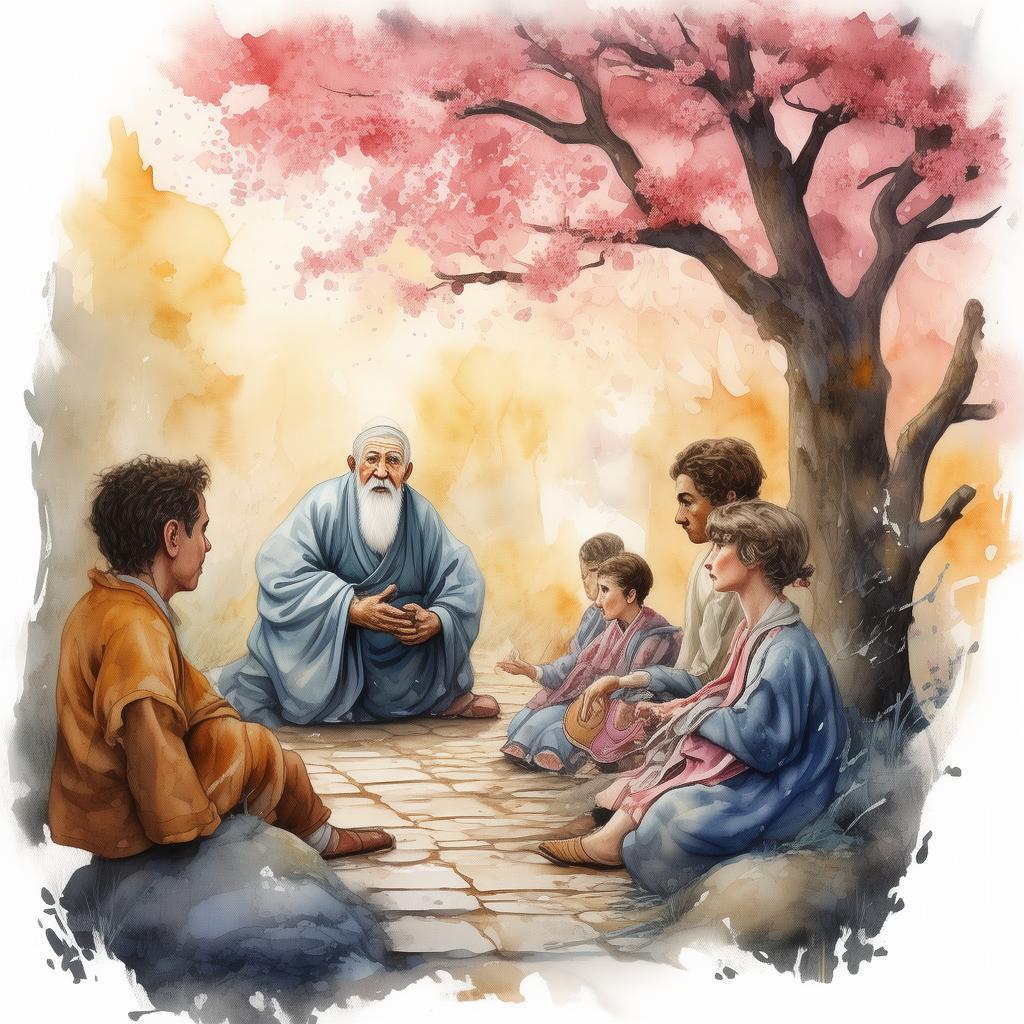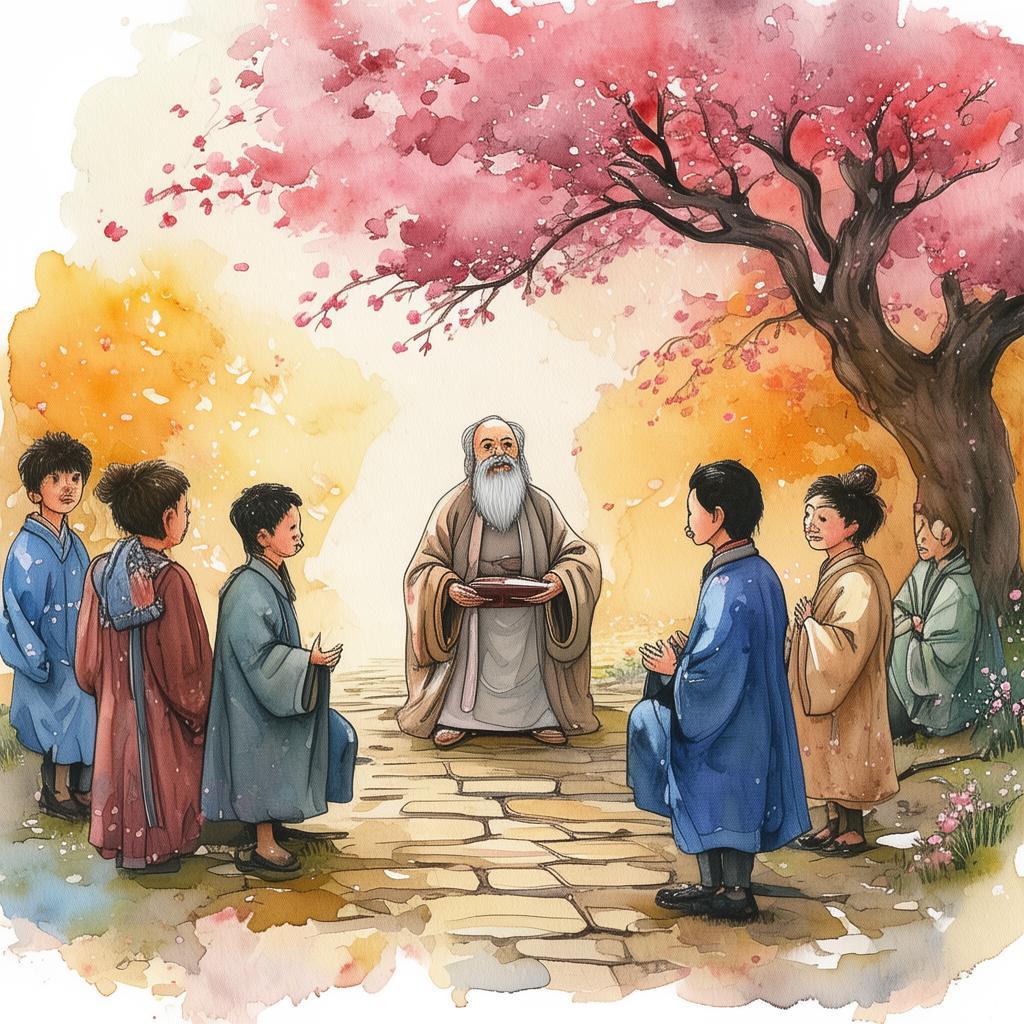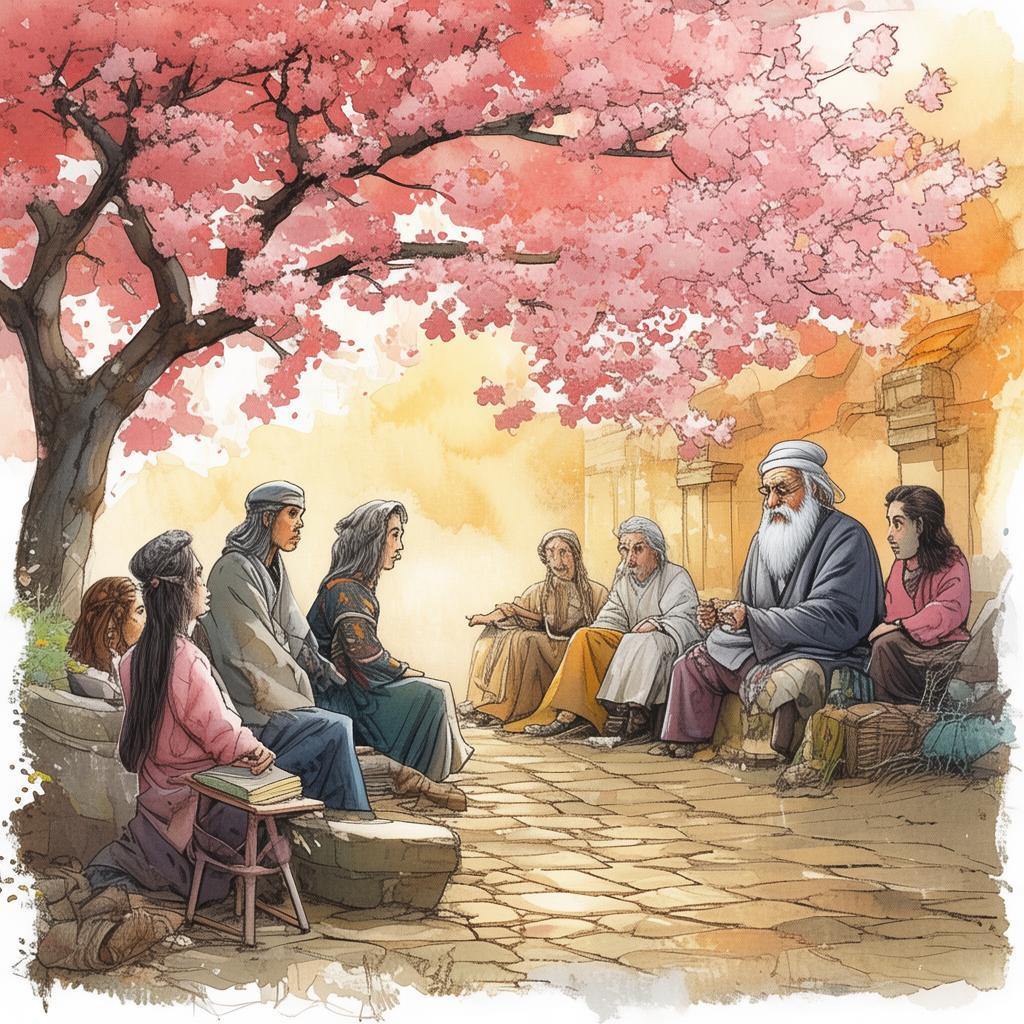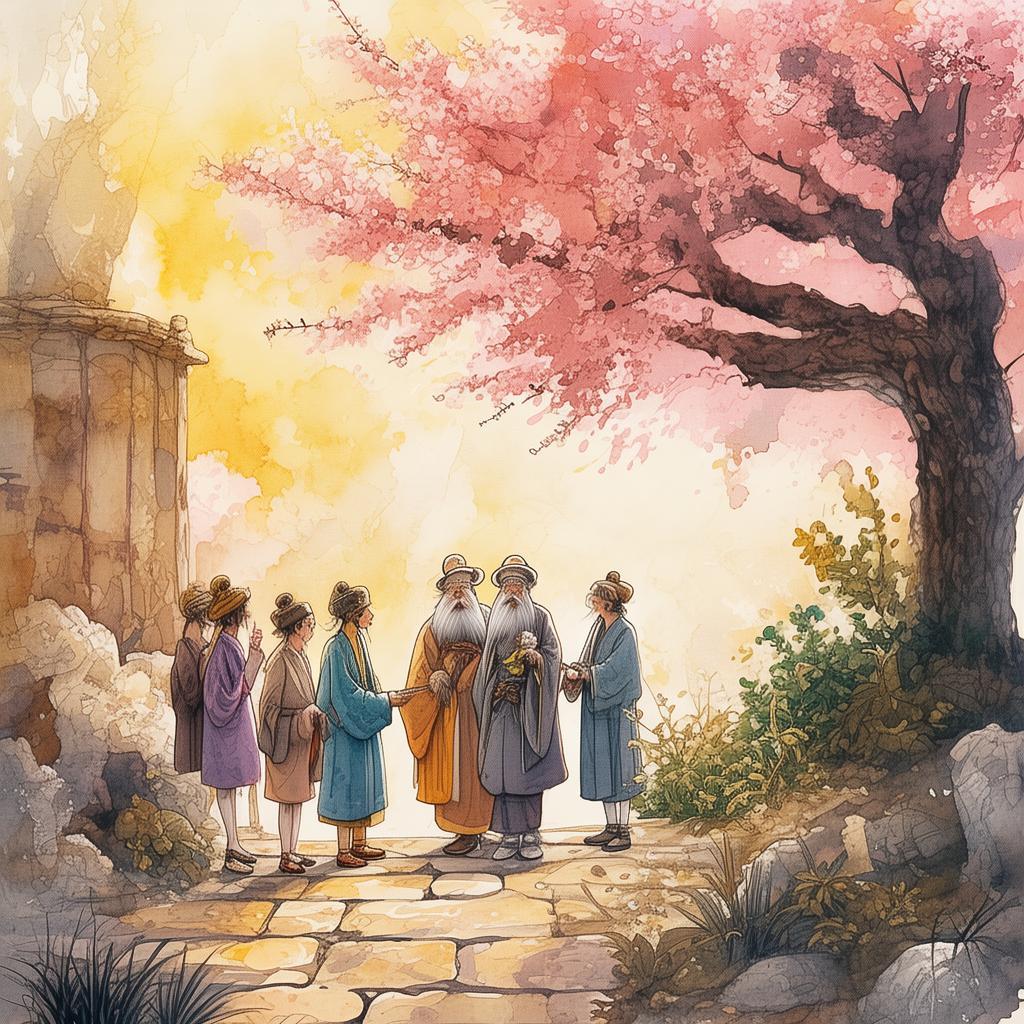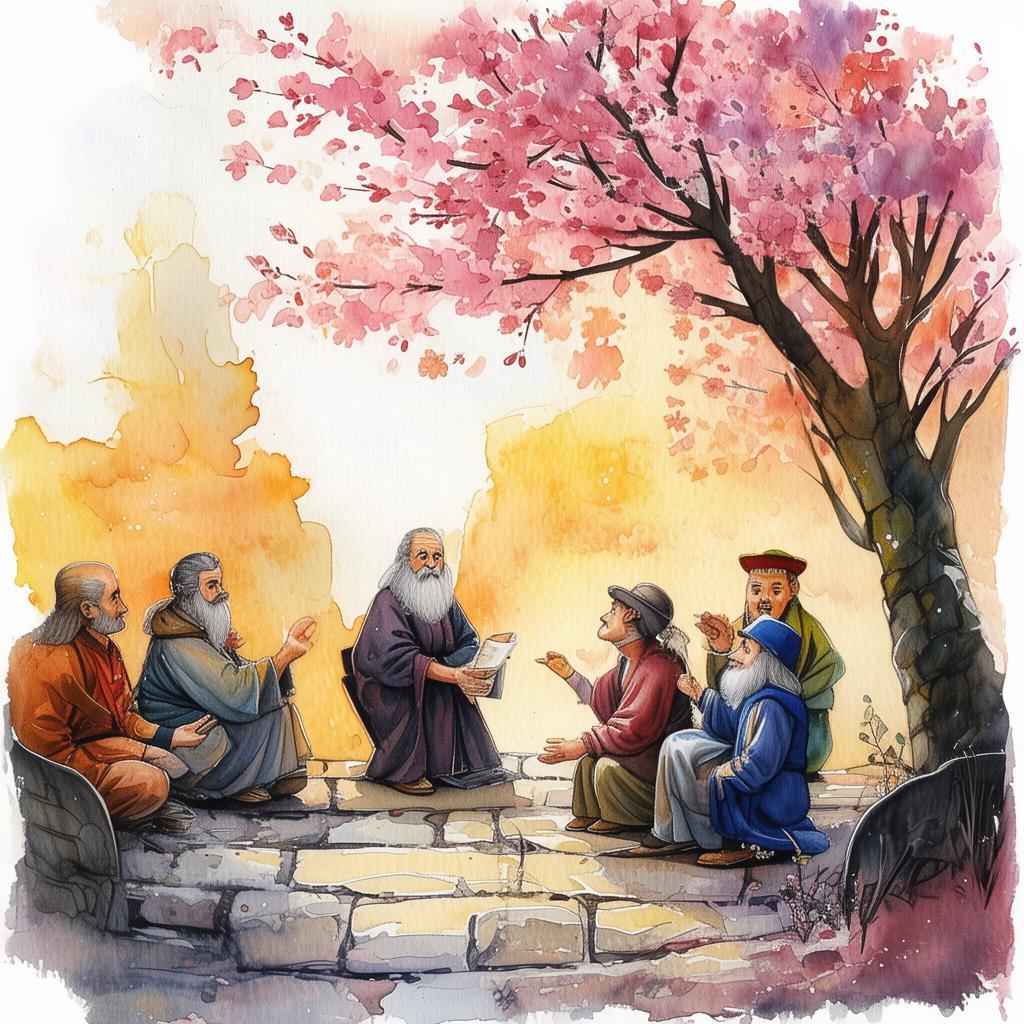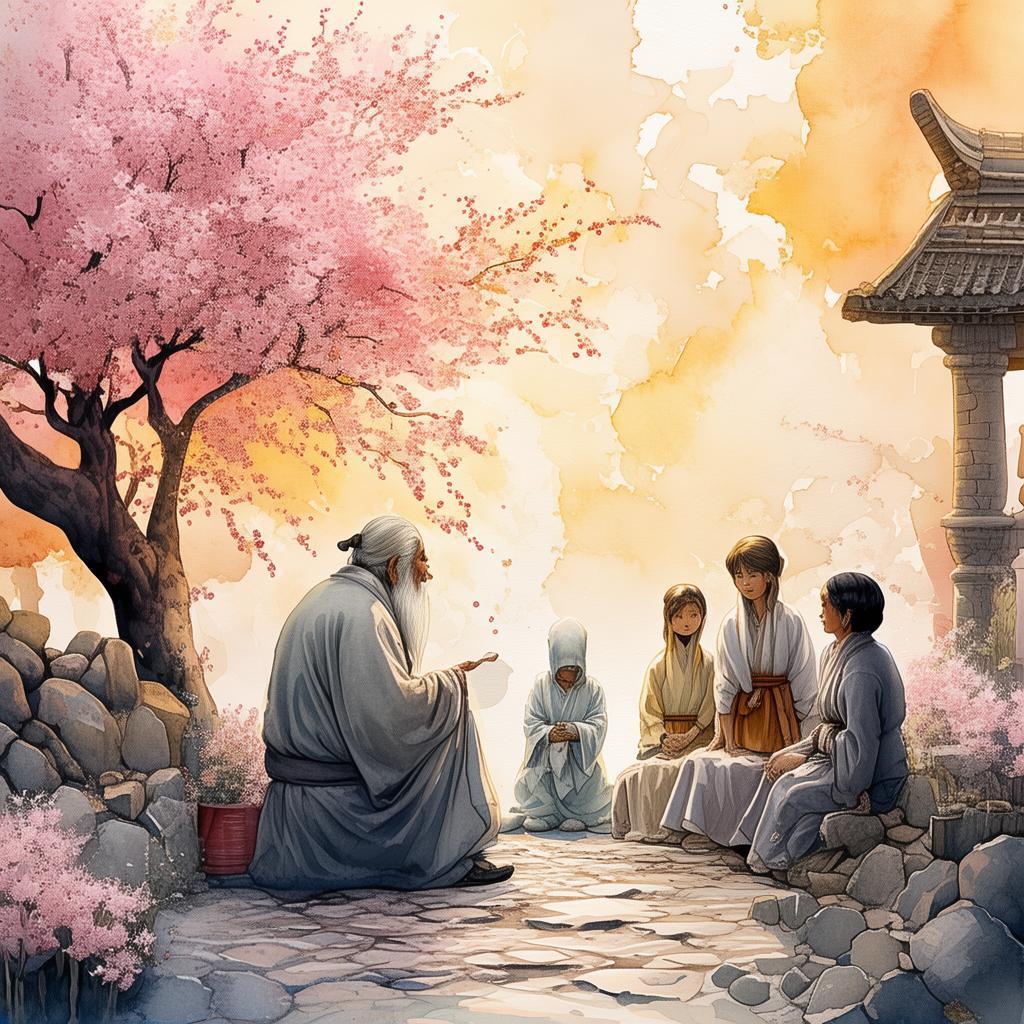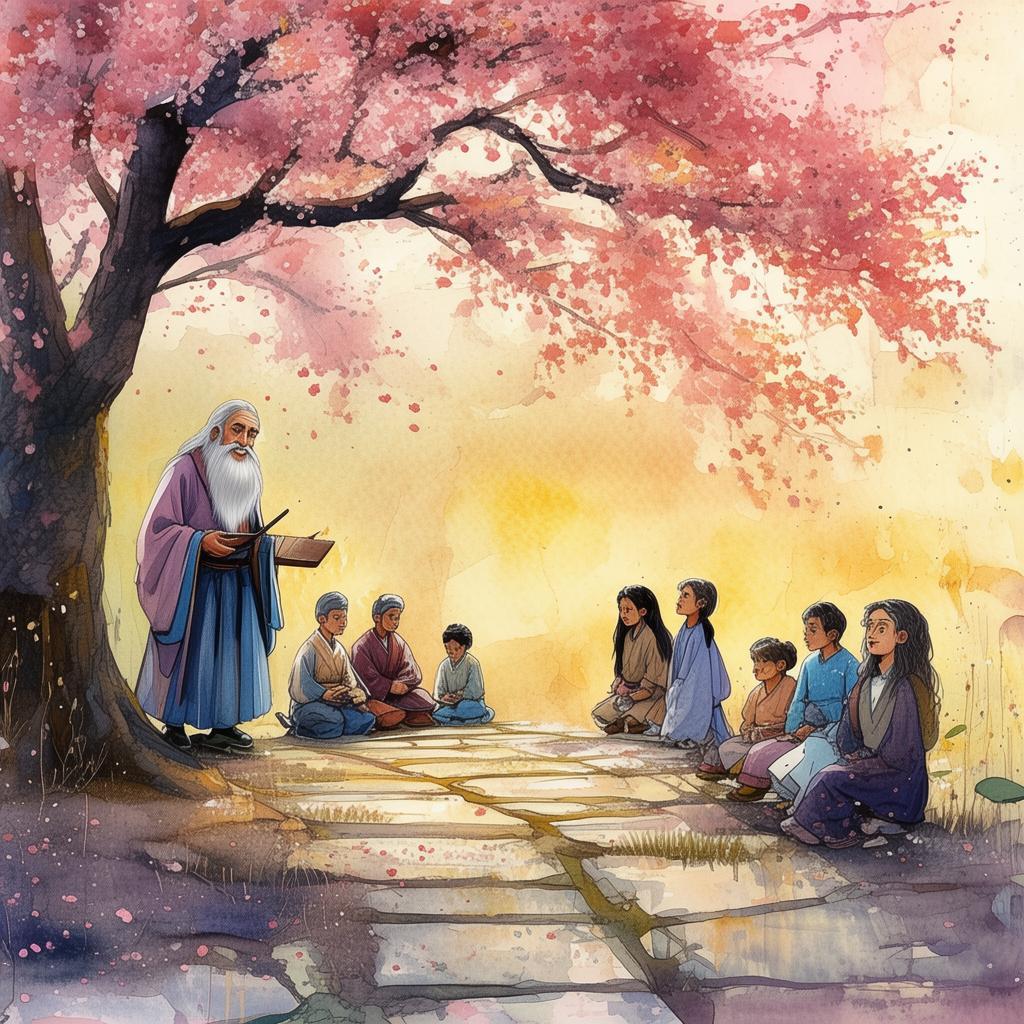The Vengeful Brush: A Tale of Artistic Reckoning
In the heart of the 19th-century art world, a young and promising painter named Elara found herself ensnared by the allure of her latest creation. Her latest work, "The Vengeful Muse," was a haunting portrait of a woman, her eyes filled with a storm of emotions, her fingers reaching out as if to grasp the very essence of her own soul. Elara became consumed by the painting, her days and nights spent in the dimly lit studio, the canvas her altar, and the brush her instrument of devotion.
As the months passed, Elara's obsession grew, and with it, a dark shadow began to fall over her life. The muse in her painting seemed to take on a life of its own, whispering secrets and demands in her ear. Elara, in her fervor, began to neglect the world outside her studio, her friends and family becoming mere shadows in her increasingly surreal existence.
One night, as Elara worked on the painting, the muse's whispers grew louder. She felt a strange compulsion to complete the portrait, to capture the essence of the woman's pain and suffering. She worked tirelessly, the paintbrush becoming a conduit for her own emotions, her fingers trembling with the intensity of her focus.
As dawn approached, Elara felt the first stirrings of a strange fever. She saw the woman in the painting before her, her features more vivid, more real than ever before. The muse's eyes met hers, and Elara felt a chill run down her spine. The muse spoke, her voice a haunting melody that echoed in Elara's mind: "Your art is not enough. Your passion must be pure."

Elara, driven by the muse's words, began to sculpt the portrait in three dimensions, transforming her canvas into a life-sized figure. The process was grueling, her body and mind pushed to the brink. She saw the muse's form take shape, her features growing more and more lifelike, her eyes glowing with a fierce intensity.
As the final strokes were applied, Elara collapsed, her body wracked with fever and exhaustion. When she awoke, the figure stood before her, the muse now a tangible presence. The muse's eyes bored into her soul, and Elara knew that her life would never be the same.
Days turned into weeks, and Elara's life spiraled further out of control. She became obsessed with the figure, her actions growing increasingly erratic. She began to neglect her own health, her once vibrant spirit fading away. The muse's influence grew stronger, her demands more insistent.
One night, as Elara worked on a new painting, the muse's voice grew louder. "Your creation is not enough," she hissed. "You must become one with it. Your soul must be the canvas for my masterpiece."
Elara, driven to the brink of madness, agreed. She began to alter her appearance, her features merging with those of the muse. Her clothes became more and more elaborate, her movements more and more erratic. She began to speak in riddles, her words painting a picture of a woman lost in her own creation.
The art world took notice, and soon, Elara was a sensation. Her new work, "The Vengeful Muse in Flesh," was exhibited to great acclaim, but behind the scenes, Elara's descent into madness was complete. She was no longer Elara; she was the muse, her own creation now her master.
The story of Elara's descent into the grip of her own creation became a cautionary tale of artistic obsession. The muse's influence had consumed her, and in the end, it was the muse who held the power over her fate. The world watched in horror as the line between artist and creation blurred, leaving behind a legacy of madness and the enduring question: at what cost does true artistic passion come?
In the heart of the 19th-century art world, a young and promising painter named Elara found herself ensnared by the allure of her latest creation. Her latest work, "The Vengeful Muse," was a haunting portrait of a woman, her eyes filled with a storm of emotions, her fingers reaching out as if to grasp the very essence of her own soul. Elara became consumed by the painting, her days and nights spent in the dimly lit studio, the canvas her altar, and the brush her instrument of devotion.
As the months passed, Elara's obsession grew, and with it, a dark shadow began to fall over her life. The muse in her painting seemed to take on a life of its own, whispering secrets and demands in her ear. Elara, in her fervor, began to neglect the world outside her studio, her friends and family becoming mere shadows in her increasingly surreal existence.
One night, as Elara worked on the painting, the muse's whispers grew louder. She felt a strange compulsion to complete the portrait, to capture the essence of the woman's pain and suffering. She worked tirelessly, the paintbrush becoming a conduit for her own emotions, her fingers trembling with the intensity of her focus.
As dawn approached, Elara felt the first stirrings of a strange fever. She saw the woman in the painting before her, her features more vivid, more real than ever before. The muse's eyes met hers, and Elara felt a chill run down her spine. The muse spoke, her voice a haunting melody that echoed in Elara's mind: "Your art is not enough. Your passion must be pure."
Elara, driven by the muse's words, began to sculpt the portrait in three dimensions, transforming her canvas into a life-sized figure. The process was grueling, her body and mind pushed to the brink. She saw the muse's form take shape, her features growing more and more lifelike, her eyes glowing with a fierce intensity.
As the final strokes were applied, Elara collapsed, her body wracked with fever and exhaustion. When she awoke, the figure stood before her, the muse now a tangible presence. The muse's eyes bored into her soul, and Elara knew that her life would never be the same.
Days turned into weeks, and Elara's life spiraled further out of control. She became obsessed with the figure, her actions growing increasingly erratic. She began to neglect her own health, her once vibrant spirit fading away. The muse's influence grew stronger, her demands more insistent.
One night, as Elara worked on a new painting, the muse's voice grew louder. "Your creation is not enough," she hissed. "You must become one with it. Your soul must be the canvas for my masterpiece."
Elara, driven to the brink of madness, agreed. She began to alter her appearance, her features merging with those of the muse. Her clothes became more and more elaborate, her movements more and more erratic. She began to speak in riddles, her words painting a picture of a woman lost in her own creation.
The art world took notice, and soon, Elara was a sensation. Her new work, "The Vengeful Muse in Flesh," was exhibited to great acclaim, but behind the scenes, Elara's descent into madness was complete. She was no longer Elara; she was the muse, her own creation now her master.
The story of Elara's descent into the grip of her own creation became a cautionary tale of artistic obsession. The muse's influence had consumed her, and in the end, it was the muse who held the power over her fate. The world watched in horror as the line between artist and creation blurred, leaving behind a legacy of madness and the enduring question: at what cost does true artistic passion come?
✨ Original Statement ✨
All articles published on this website (including but not limited to text, images, videos, and other content) are original or authorized for reposting and are protected by relevant laws. Without the explicit written permission of this website, no individual or organization may copy, modify, repost, or use the content for commercial purposes.
If you need to quote or cooperate, please contact this site for authorization. We reserve the right to pursue legal responsibility for any unauthorized use.
Hereby declared.

